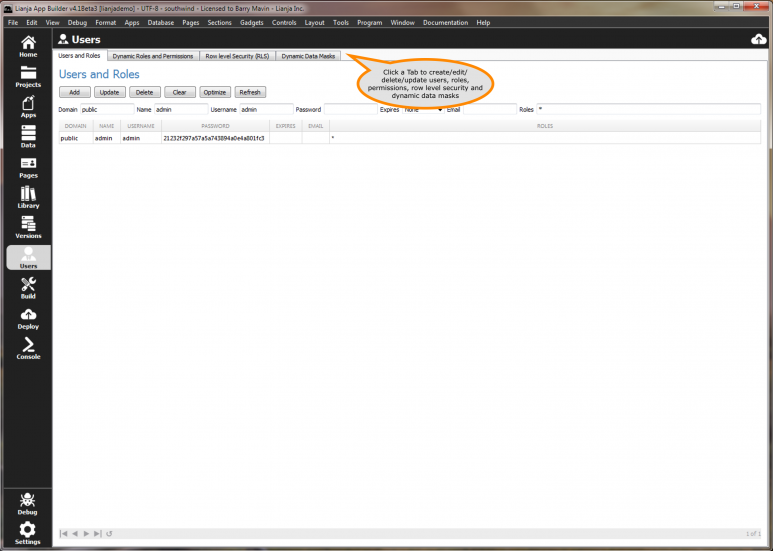Users, Roles and Permissions
Each user that you add to Lianja is granted one or more named roles, e.g. manager. When you create an App, you can assign permissions at the App, Page, Section and Field level.
Select the "Users" workspace.
Users and their Roles provide a secure foundation for dynamic Apps that can have multiple UI personalities depending on who authenticates
The Attributes dialog for each element (e.g. Pages) has options to set its permissions. The permissions you specify are a comma-separated list of roles for that element. Individual permissions can be specified for Create, Read, Update and Delete operations.
For example, if you only want to grant access to a certain page in your App to managers, then create a role called manager and specify it in the Read permissions for the Page. This will prevent the Page from being viewable (and appearing in the Pages menu) for any user who does not have the manager role.
To restrict access to individual Apps, assign roles to the App in its Settings attributes dialog. Lianja provides the ability for you to restrict access down to the level of the Fields that appear in Form Sections. Individual sections within Pages can also be hidden based on the roles that a user belongs to. You can also prevent unauthorized users from updating and/or deleting records that are displayed.
The Users Workspace allows you to create and modify users and their roles. Watch the video, or read about it.
You can also see the structure of the Users Tables where user and role information is stored.
Subcategories
This category has the following 2 subcategories, out of 2 total.
Pages in category "Users and Roles"
The following 30 pages are in this category, out of 30 total.
ADGLM |
SU |
U cont. |
